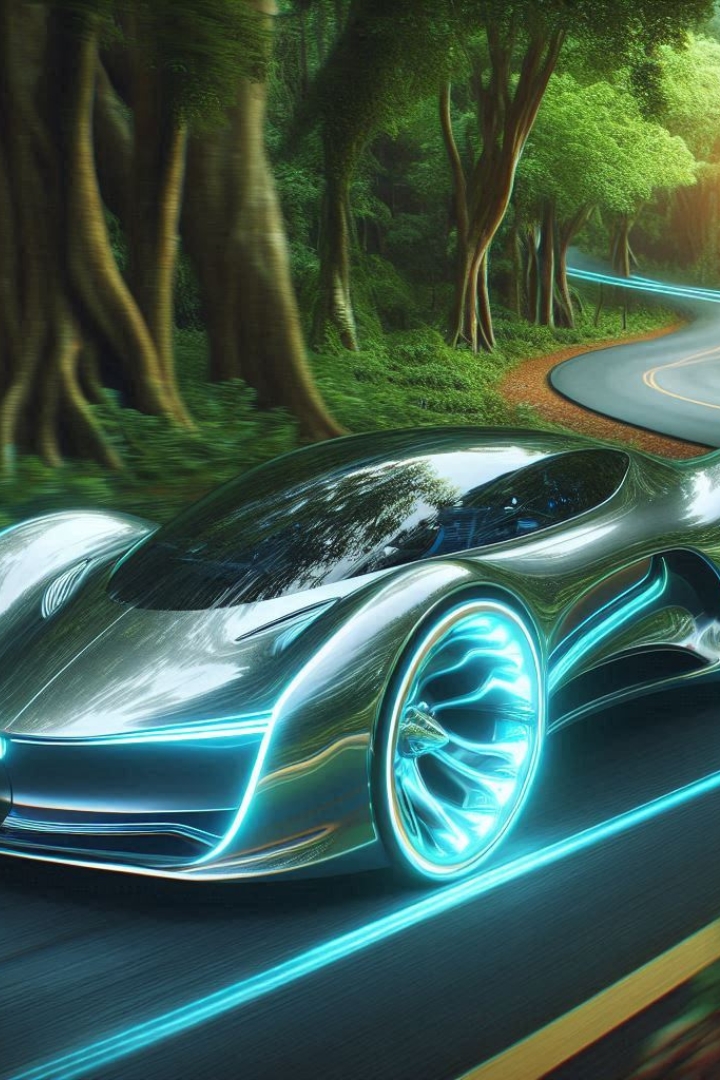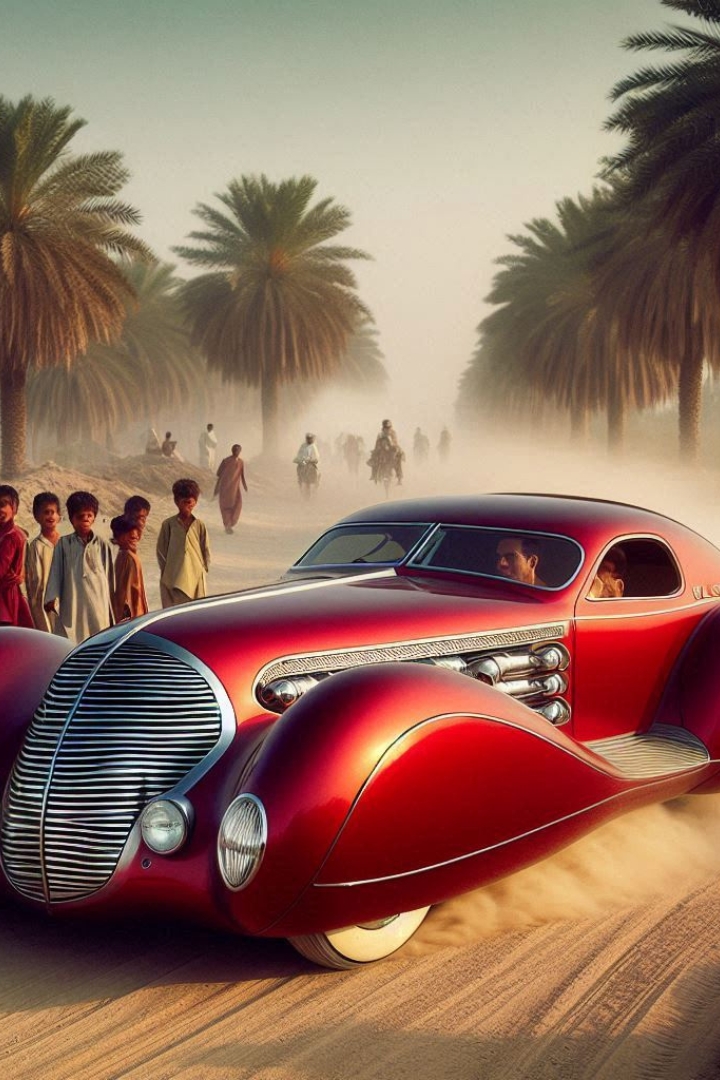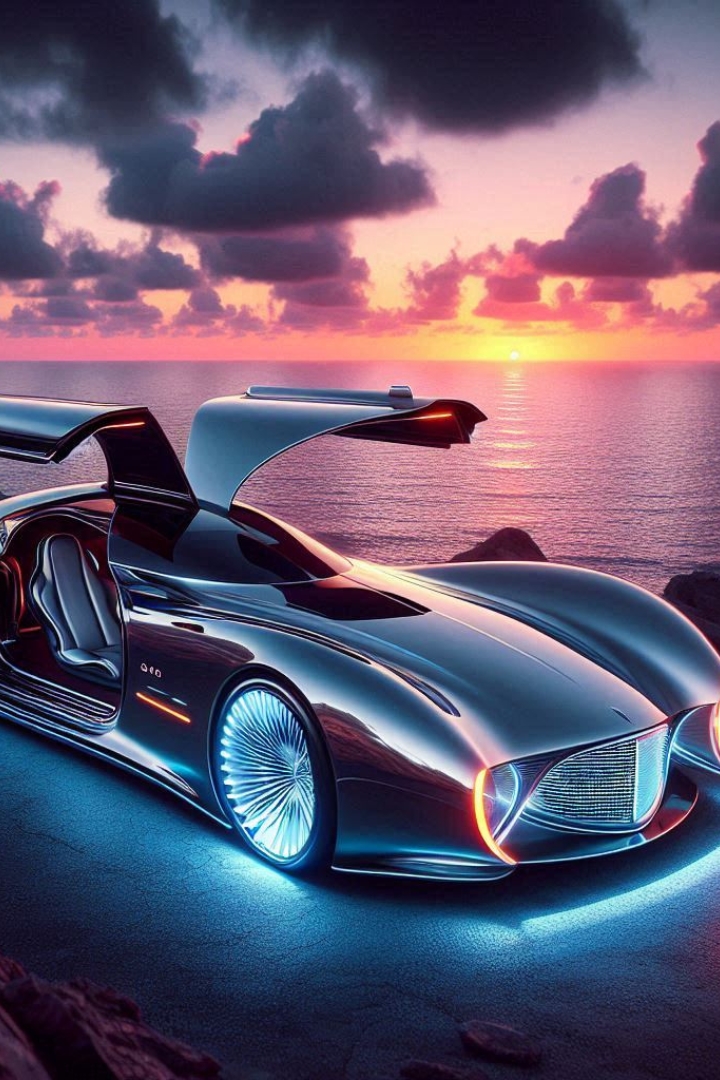Unique Streamliner Cars: A Journey Through Design and Innovation 19
Table of Contents
- Unique Streamliner Cars: A Journey Through Design and Innovation 19
The Birth of Streamlining
Smoothing out started as an investigation of streamlined standards to work on the speed and effectiveness of vehicles. The idea was vigorously affected by headways in aeronautics and the comprehension that decreasing air obstruction could upgrade execution. Creators looked to make vehicles that could coast through the air with negligible drag, prompting the particular tear shapes related with streamliner cars.
The German architect Paul Jaray, who had chipped away at aircraft configuration, applied his insight to autos. His work established the groundwork for future streamliner cars, underlining the significance of decreasing drag to speed up.
Notable Streamliner Models
A few streamliner cars have become notorious for their plan and execution. These vehicles epitomize the standards of smoothing out as well as address huge achievements in auto history.
Chrysler Wind stream
Presented in 1934, the Chrysler Wind stream was perhaps the earliest efficiently manufactured vehicle to underline optimal design. Its progressive plan included an adjusted front, coordinated headlights, and an inclining roofline. Regardless of its imaginative methodology, the Wind stream battled in the market because of its unusual appearance and creation challenges. Notwithstanding, it laid the basis for future streamlined plans.
Tatra T77
The Tatra T77, disclosed in 1934, was a Czechoslovakian extravagance vehicle that pushed the limits of smoothing out. Planned by Hans Ledwinka and Paul Jaray, it highlighted a back mounted air-cooled motor and a striking tear shape. The T77’s high level streamlined features and designing made it one of the most productive vehicles of now is the right time, equipped for arriving at speeds up to 93 mph.
Bugatti Type 57SC Atlantic
. With its dipping lines and bolted creases, the Atlantic consolidated imaginative style with streamlined effectiveness. Just four were constructed, making it a profoundly pursued gatherer’s thing.
Lincoln Breeze
The Lincoln Breeze, presented in 1936, was a critical step in the right direction in American streamliner plan. Its smooth, smoothed out body and V12 motor went with it a well known decision among extravagance vehicle purchasers. The Breeze’s prosperity laid out Lincoln as a forerunner in auto development and plan.
Saab 92
The Saab 92, sent off in 1949, denoted the Swedish organization’s entrance into the car market. Its tear shape and efficiently enhanced plan were affected by Saab’s aviation foundation. The 92’s accentuation on effectiveness and common sense set up for future Saab models

.The Golden Age of Streamlining
The 1930s and 1940s are in many cases considered the brilliant period of smoothing out. During this period, streamliner vehicles became images of progress and advancement, catching the creative mind of people in general and the business. This time saw critical progressions in plan and innovation, as makers contended to make the most effective and outwardly striking vehicles.
Streamliner vehicles were displayed at global car exhibitions and fairs, where they were commended as instances of cutting edge plan. The blend of smooth feel and state of the art designing resounded with buyers, who were progressively intrigued by speed, proficiency, and style.
The effect of streamliner configuration reached out past vehicles. The standards of smoothing out affected different fields, including engineering, modern plan, and transportation. Smoothed out trains, transports, and even home devices became famous, mirroring the far and wide allure of the stylish.
Challenges and Decline
Despite their initial popularity, streamliner cars faced several challenges that eventually led to their decline. One of the main issues was the cost of production. The complex shapes and advanced materials required for streamliner designs often resulted in higher manufacturing expenses, making these vehicles more expensive than traditional models.
The focus shifted toward simpler, more angular shapes that emphasized functionality and efficiency. While some elements of streamlining persisted, the era of teardrop-shaped vehicles came to an end.
The Legacy of Streamliner Cars
In spite of the fact that streamliner vehicles are as of now not underway, their heritage lives on in different parts of auto plan and designing. The accentuation on optimal design and proficiency keeps on affecting present day vehicles, from electric vehicles to superior execution sports vehicles.
A considerable lot of the plan standards spearheaded by streamliner vehicles are as yet important today. Streamlined proficiency stays a critical thought in lessening fuel utilization and discharges, as well as further developing execution. Smoothed out shapes and imaginative materials keep on assuming a part in the improvement of new vehicles.
The tasteful allure of streamliner vehicles likewise perseveres, with their smooth plans frequently viewed as immortal instances of car masterfulness. Exemplary vehicle lovers and authorities proceed to respect and safeguard these vehicles, perceiving their importance throughout the entire existence of auto plan.
The Science of Aerodynamics
Streamlined features is the investigation of how air communicates with strong items, similar to vehicles, and is a significant figure car plan. Streamliner vehicles were among quick to apply streamlined standards to further develop vehicle execution by decreasing drag — the power that goes against an item’s movement through the air.
Standards of Optimal design
The essential objective of smoothing out is to limit drag, which comprises of two fundamental parts: pressure drag and skin rubbing. Pressure drag is brought about by the state of the vehicle disturbing the wind current, making high tension at the front and low strain at the back. Skin rubbing, then again, results from the air’s contact with the vehicle’s surface.
Streamliner vehicles intended to diminish the two kinds of drag by including smooth, adjusted shapes with encased haggles backsides. The tear shape, portrayed by an adjusted front and a continuously restricting tail, turned into a sign of streamliner plan. This shape permits air to stream flawlessly over the vehicle, lessening disturbance and limiting drag.
Air stream Testing
Air stream testing assumed a critical part in the improvement of streamliner vehicles. By reproducing wind stream around a vehicle, planners could investigate the impacts of various shapes and setups. This considered exact acclimations to advance streamlined effectiveness. A significant number of the best streamliner vehicles went through broad air stream testing, prompting leap forwards in plan that better both speed and eco-friendliness.

Cultural Impact of Streamliner Cars
Streamliner vehicles arose during a period of fast innovative progression and social change. They became images of progress and innovation, mirroring the confidence and ground breaking demeanor of the mid twentieth hundred years. The smooth, cutting edge plans of streamliner vehicles caught the public’s creative mind and became symbols of the time.
Effect on Craftsmanship and Plan
The streamliner stylish reached out past cars, impacting different parts of workmanship and plan. The smoothed out structure became inseparable from advancement and was integrated into everything from engineering to domestic devices. This plan reasoning, frequently alluded to as Smooth out Moderne, stressed straightforwardness, bends, and a feeling of movement, reflecting the streamlined standards utilized in vehicles.
Streamliner vehicles likewise assumed a huge part in mainstream society, showing up in movies, ads, and different media as images of extravagance and development. Their one of a kind shapes and modern allure made them ideal for displaying the conceivable outcomes of innovation and plan.
The Job of Streamliner Vehicles in Hustling
Streamliner vehicles likewise made critical commitments to the universe of dashing, where streamlined effectiveness is central. All through the mid-twentieth 100 years, producers and confidential groups explored different avenues regarding smoothed out plans to accomplish higher paces and better execution on the track.
One of the most popular models is the Vehicle Association Type C, a Fantastic Prix dashing vehicle from the 1930s. With its smooth plan and back mounted motor, the Sort C exhibited the capability of smoothing out in aggressive hustling. It accomplished striking rates and turned into an imposing contender on the European hustling circuit.
Streamliner vehicles kept on affecting hustling plan in the next many years. The standards of optimal design refined during the streamliner period laid the basis for the cutting edge hustling vehicles we see today, where air stream testing and computational liquid elements are necessary to vehicle improvement.
Technological Innovations
Streamliner vehicles presented a large group of mechanical developments that were basic to their prosperity and heritage. These headways further developed vehicle execution as well as laid the basis for future advancements in car designing.
Case and Suspension Improvements
To oblige the smoothed out bodies and upgrade the driving experience, engineers grew new frame and suspension frameworks. These advancements gave better strength and dealing with, especially at high rates, and added to the general presentation of streamliner vehicles.
Autonomous suspension frameworks, for instance, turned out to be more common during this period. They permitted each wheel to move autonomously, further developing ride solace and taking care of. This innovation is currently standard in present day vehicles, showing the enduring effect of streamliner vehicles on car designing.
Motor and Powertrain Headways
Streamliner vehicles likewise pushed the limits of motor plan and powertrain innovation. To accomplish the paces made conceivable by their streamlined shapes, these vehicles required strong motors equipped for conveying elite execution.
Engineers explored different avenues regarding different arrangements, including back mounted motors and air-cooled frameworks, to improve execution and equilibrium. These advancements affected the improvement of sports vehicles and execution vehicles in the next many years.

Lightweight Materials
The utilization of lightweight materials was one more huge advancement in streamliner vehicle plan. Aluminum, for instance, was many times utilized instead of steel to lessen weight and further develop proficiency. This emphasis on weight decrease is a vital thought in current vehicle plan, especially in electric vehicles, where proficiency is foremost.
More extensive Effect on Transportation and Industry
Streamliner vehicles had an expansive effect past the auto business, impacting different parts of transportation and modern plan.
Influence on Rail and Public Transportation
The standards of smoothing out were applied to trains and public transportation frameworks, prompting the advancement of high velocity rail and smoothed out transports. These headways worked on the proficiency and speed of public vehicle, making it more interesting to travelers.
The famous “streamliner” trains of the 1930s and 1940s, like the Burlington Breeze and the Association Pacific M-10000, exemplified this pattern. Their smooth plans and strong motors set new norms for traveler solace and speed, altering rail travel.
Effect on Design and Purchaser Items
Smooth out Modern engineering arose as a famous plan style during the 1930s and 1940s, described by smooth bends, long flat lines, and nautical components. Structures, homes, and public designs embraced this stylish, mirroring the impact of streamliner vehicles on engineering.
Shopper items additionally embraced the smoothed out look, including fridges to radios highlighting streamlined shapes. This pattern featured the public’s interest with speed and innovation, broadening the impact of streamliner vehicles into regular daily existence.
Enduring Inheritance and Gatherer’s Market
Today, streamliner vehicles are exceptionally valued by authorities and lovers who value their authentic importance and one of a kind plan. Reestablished and safeguarded instances of these vehicles can get exorbitant costs at barters, mirroring their status as car symbols.
The getting through allure of streamliner vehicles lies in their capacity to catch a significant crossroads in history when plan, innovation, and culture met. They stay a demonstration of the force of development and the quest for greatness in car designing
Influential Streamliner Models
Several streamliner vehicles lastingly impact auto arrangement, extending the limits of what was conceivable during their time. Here, we analyze a few additional striking models that exemplified the smoothing out headway.
Mercedes-Benz 540K Streamliner
Conveyed for immense distance hustling, its smooth, lightweight aluminum body lessened drag and further made speed and capacity. The vehicle consolidated an inline 8-chamber supercharged motor that conveyed 180 drive, making it one of the most extraordinary and huge level vehicles of right now is the best an open door.
Adler 2.5 Liter
The Adler 2.5 Liter, organized in the last piece of the 1930s, was one more trailblazer in streamliner progression. Counting a smoothed out body organized by Paul Jaray, it showed an innovative streamlined profile that on an extremely fundamental level diminished drag. The vehicle’s overall plan assisted it with accomplishing crucial rates, seeking after it a serious decision in hustling and really extended travel.
Delahaye 165
The Delahaye 165 was a shocking portrayal of Workmanship Deco configuration got along with streamliner standards. Uncovered in 1938, it highlighted a V12 motor and a smooth, streaming body made by French coachbuilder Figoni et Falaschi. The vehicle’s wonderful bends and clear style made it an image of extravagance and multifaceted nature, getting the epitome of smoothed out plan.
Phantom Corsair
The Phantom Corsair, presented in 1938, was a crazy takeoff from ordinary vehicle plan. Made by Rust Heinz and Maurice Schwartz, it highlighted a bleeding edge, smoothed out body with encased bargains low, wide position. Filled by a Lycoming V8 motor, the Ghost Corsair was somewhat radical in both plan and improvement, however it never went into colossal extension delivering.

Cultural and Economic Influences
The new development and reputation of streamliner vehicles were anxiously impacted by the social and monetary setting of the early to mid-20th hundred years.
The Cash related emergency of the mid 20s and Monetary Hardships
The Cash related emergency of the mid 20s of the 1930s basically impacted the auto business. As cash related conditions weakened, vehicle makers went up against declining bargains and reduced client spending. Streamliner vehicles emerged as a technique for reviving compensation in the auto market, offering an energy of trust and improvement during hazardous times.
Streamliner vehicles, with their general plans, would in everyday advancement and improvement, dazzling to buyers searching for up to this point mind blowing things. Makers used these vehicles to display their mechanical cutoff and hang out in a terrible market.
The Effect of World Fairs and Works
World fairs and works expected a key part in impelling streamliner vehicles. These events gave makers a phase to highlight their latest plans and enhancements to a general get-together. The streamlined classy fit perfectly with the subjects of endlessly progress that portrayed these presentations.
For example, the 1939 New York World’s Fair observably included streamliner vehicles as a piece of its “Universe of Tomorrow” subject. Automakers used the sensible to seem thought vehicles and part advancements in ideal game plan, getting the public’s imaginative frontal cortex and fanning out the streamliner’s place in auto history.
Streamliner Vehicles in Standard society
Streamliner vehicles immediately became pictures of standard society, appearing in movies, headways, and various media as pictures of excess and movement. Their smooth, critical level plans made them ideal for depicting the possible outcomes of progress and plan.
In films, streamliner vehicles were reliably associated with overflow, impact, and progress. They changed into the vehicle of choice for characters who exemplified these qualities, further working on their allure and persona.

Conclusion
Streamliner cars represent a unique and transformative period in automotive history. Their emphasis on aerodynamics, technological innovation, and modern aesthetics reshaped the industry and left a lasting impact on various aspects of transportation and design.
By pushing the boundaries of what was possible, streamliner cars paved the way for future advancements and inspired generations of designers and engineers. Their legacy continues to influence modern automotive design, reminding us of the importance of creativity and innovation in shaping the future of transportation.
As we move forward into the 21st century, the principles and spirit of streamliner cars remain relevant, offering valuable insights into the challenges and opportunities that lie ahead in the ever-evolving world of automotive design.
FAQs About Streamliner Cars
- What are streamliner cars?
Answer:
Streamliner cars are vehicles designed with a focus on aerodynamics to minimize air resistance and improve speed and efficiency. They feature smooth, rounded shapes, enclosed wheels, and tapered rear ends, which help reduce drag and enhance performance. Streamliner cars gained popularity in the early to mid-20th century, representing technological innovation and modern design.
- Why were streamliner cars developed?
Answer:
Streamliner cars were developed to improve vehicle performance by reducing aerodynamic drag, which allowed for higher speeds and better fuel efficiency. They emerged during a time of technological advancement and economic challenge, providing a way for automakers to showcase innovation and attract consumers with futuristic designs.
- Who were some key figures in the development of streamliner cars?
Answer:
Several key figures contributed to the development of streamliner cars, including:
- Paul Jaray: An engineer who applied aerodynamic principles from aviation to automotive design, influencing many early streamliner models.
- Ferdinand Porsche: Known for his work on the Volkswagen Beetle, which incorporated streamlined design elements.
- Gabriel Voisin: A pioneer in the application of aerodynamics in both aviation and automotive industries.
- How did streamliner cars influence modern car design?
Answer:
Streamliner cars laid the foundation for modern automotive design by emphasizing the importance of aerodynamics. The principles of reducing drag and optimizing airflow continue to influence the design of today’s vehicles, particularly in electric and hybrid cars, where efficiency is crucial. Many contemporary vehicles feature streamlined shapes that echo the aesthetics of classic streamliner cars.
- What are some famous examples of streamliner cars?
Answer:
Some famous examples of streamliner cars include:
- Mercedes-Benz 540K Streamliner: Known for its advanced aerodynamic design and performance.
- Tatra 77: One of the first cars to use a streamlined body, designed by Hans Ledwinka.
- Phantom Corsair: A futuristic, one-off prototype with a unique and radical design.
- Auto Union Type C: A Grand Prix racing car that showcased the benefits of streamlining in competitive racing.
- What role did streamliner cars play in racing?
Answer:
Streamliner cars played a significant role in racing by demonstrating the advantages of aerodynamic design in achieving higher speeds and improved performance. They were used in various racing events, where their streamlined shapes allowed for better handling and acceleration. The lessons learned from these racing cars helped shape the development of modern racing vehicles.
- How did the public perceive streamliner cars during their peak?
Answer:
During their peak, streamliner cars were seen as symbols of progress, innovation, and modernity. Their futuristic designs captured the public’s imagination and were often associated with luxury and advanced technology. They were featured in world fairs, expositions, and popular media, further enhancing their status as icons of the era.
- Are streamliner cars still being produced today?
Answer:
While the classic era of streamliner cars has passed, their design principles continue to influence modern automotive design. Some manufacturers produce limited-edition models inspired by historic streamliners, while others incorporate aerodynamic features into everyday vehicles. Electric and hybrid cars, in particular, benefit from streamlined designs to improve efficiency and range.
- What challenges did streamliner cars face during their development?
Answer:
Streamliner cars faced several challenges, including:
- Manufacturing Complexity: The unique shapes and materials required for streamlined designs were often complex and expensive to produce.
- Market Acceptance: While innovative, some streamliner designs were too radical for the average consumer, limiting their widespread adoption.
- Economic Conditions: The Great Depression and subsequent economic challenges affected the automotive industry, impacting the development and sale of streamliner cars.
- Why are streamliner cars popular among collectors?
Answer:
Streamliner cars are popular among collectors due to their historical significance, innovative design, and rarity. Restored examples of these vehicles are highly sought after and often fetch high prices at auctions. Collectors appreciate them for their unique place in automotive history and their role in shaping modern car design.
